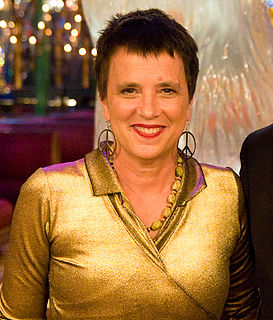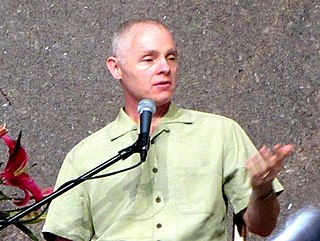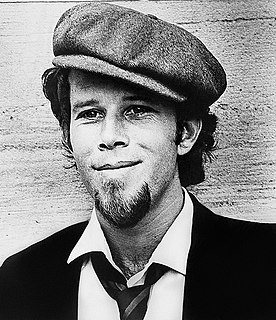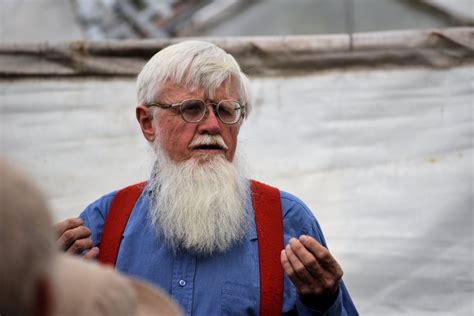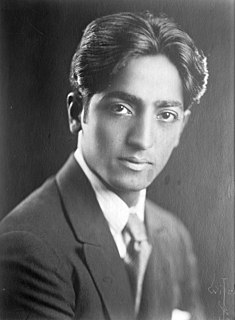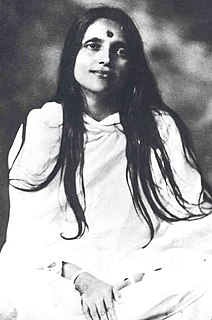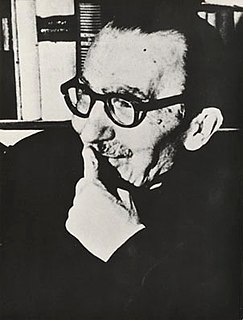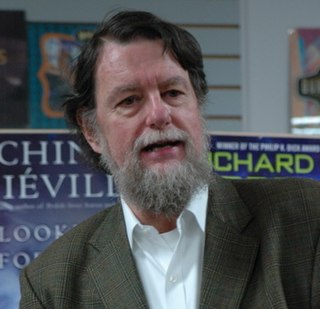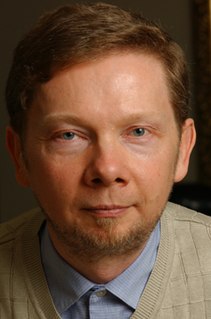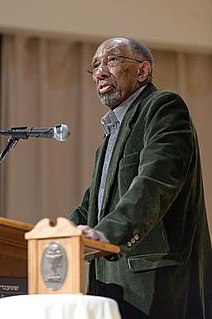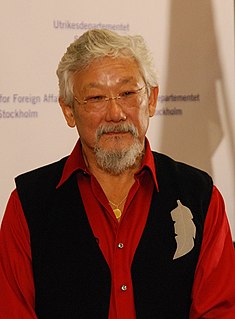A Quote by Carl Sagan
We humans look rather different from a tree. Without a doubt we perceive the world differently than a tree does. But down deep, at the molecular heart of life, the trees and we are essentially identical.
Related Quotes
What we want is another sample of life, which is not on our tree of life at all. All life that we've studied so far on Earth belongs to the same tree. We share genes with mushrooms and oak trees and fish and bacteria that live in volcanic vents and so on that it's all the same life descended from a common origin. What we want is a second tree of life. We want alien life, alien not necessarily in the sense of having come from space, but alien in the sense of belonging to a different tree altogether. That is what we're looking for, "life 2.0."
Mr. Freeman: You are getting better at this, but it's not good enough. This looks like a tree,but it is an average, ordinary, everyday, boring tree. Breathe life into it. Make it bend - trees are flexible, so they don't snap. Scar it, give it a twisted branch - perfect trees don't exist. Nothing is perfect. Flaws are interesting. Be the tree.
The body is a sensing instrument of consciousness. Without the body and mind,
the trees could not see themselves. Usually we think that we are looking at a tree, but the tree is looking at itself through us. Without this instrument, the tree does not get to see itself. We are sensing instruments of the Divine.
Once upon a time there was a crooked tree and a straight tree. And they grew next to each other. And every day the straight tree would look at the crooked tree and he would say, "You're crooked. You've always been crooked and you'll continue to be crooked. But look at me! Look at me!" said the straight tree. He said, "I'm tall and I'm straight." And then one day the lumberjacks came into the forest and looked around, and the manager in charge said, "Cut all the straight trees." And that crooked tree is still there to this day, growing strong and growing strange.
We never see a tree except through the image that we have of it, the concept of that tree; but the concept, the knowledge, the experience, is entirely different from the actual tree. Look at a tree and you will find how extraordinarily difficult it is to see it completely, so that no image, no screen, comes between the seeing and the actual fact. By completely I mean with the totality of your mind and heart, not a fragment of it.
Do you know that even when you look at a tree and say, `That is an oak tree', or `that is a banyan tree', the naming of the tree, which is botanical knowledge, has so conditioned your mind that the word comes between you and actually seeing the tree? To come in contact with the tree you have to put your hand on it and the word will not help you to touch it.
Enquire: 'Who am I?' and you will find the answer. Look at a tree: from one seed arises a huge tree; from it comes numerous seeds, each one of which in its turn grows into a tree. No two fruits are alike. Yet it is one life that throbs in every particle of the tree. So, it is the same Atman everywhere.
When an almond tree became covered with blossoms in the heart of winter, all the trees around it began to jeer. 'What vanity,' they screamed, 'what insolence! Just think, it believes it can bring spring in this way!' The flowers of the almond tree blushed for shame. 'Forgive me, my sisters,' said the tree. 'I swear I did not want to blossom, but suddenly I felt a warm springtime breeze in my heart.
Violence harms the one who does it as much as the one who receives it. You could cut down a tree with an axe. The axe does violence to the tree, and escapes unharmed. Is that how you see it? Wood is soft compared to steel, but the sharp steel is dulled as it chops, and the sap of the tree will rust and pit it. The mighty axe does violence to the helpless tree, and is harmed by it. So it is with men, though the harm is in the spirit.
But there are times when a tree can no longer withstand the pain inflicted on it, and the wind will take pity on that tree and topple it over in a mighty storm. All the other trees who witnessed the evil look down upon the fallen tree with envy. They pray for the day when a wind will end their suffering. I pray for the day when God will end mine.
Consider a tree for a moment. As beautiful as trees are to look at, we don't see what goes on underground - as they grow roots. Trees must develop deep roots in order to grow strong and produce their beauty. But we don't see the roots. We just see and enjoy the beauty. In much the same way, what goes on inside of us is like the roots of a tree.
According to accounts of the Buddha's life, it would seem that he had a very deep relationship with nature. He was not born in the royal palace but in a park, under a sala tree. He attained complete enlightenment under the bodhi tree and left this earth to enter Parinirvana, again, between three sala trees. It would seem that the Buddha was very fond of trees.

